Paddy Rossmore: Photographs marks a decade of the photographer’s travels around Ireland, which began with Desmond FitzGerald, Knight of Glin, and Mariga Guinness of the Irish Georgian Society during the early 1960s.
Rossmore's photography began when he toured Ireland with a camera after attending Cambridge. Despite his amateur status, his photographs were sought after for books and periodicals such as Country Life. His collection is now in the Irish Architectural Archive in Dublin.
Rossmore’s images provide a unique archive dedicated to the preservation of houses and their interiors, resurrecting times past. Seventy of them have been collected in Paddy Rossmore: Photographs, published by the Lilliput Press, alongside essays by the cultural historian Robert O’Byrne.
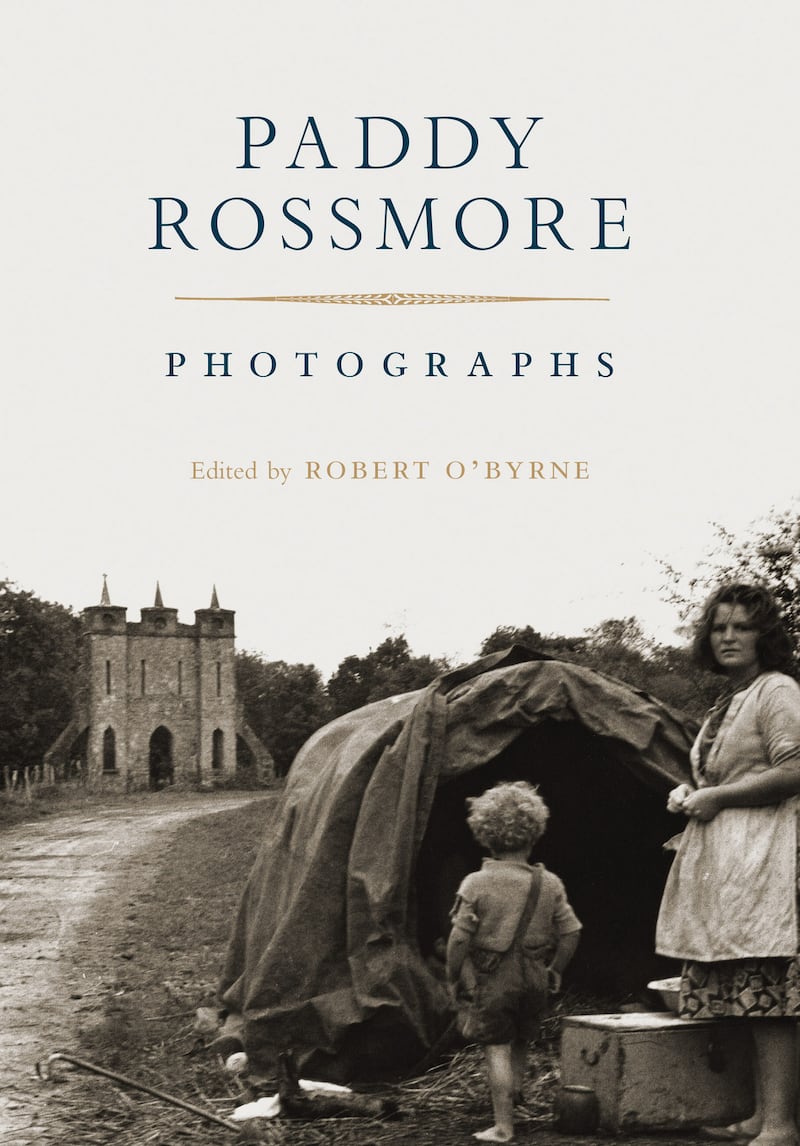
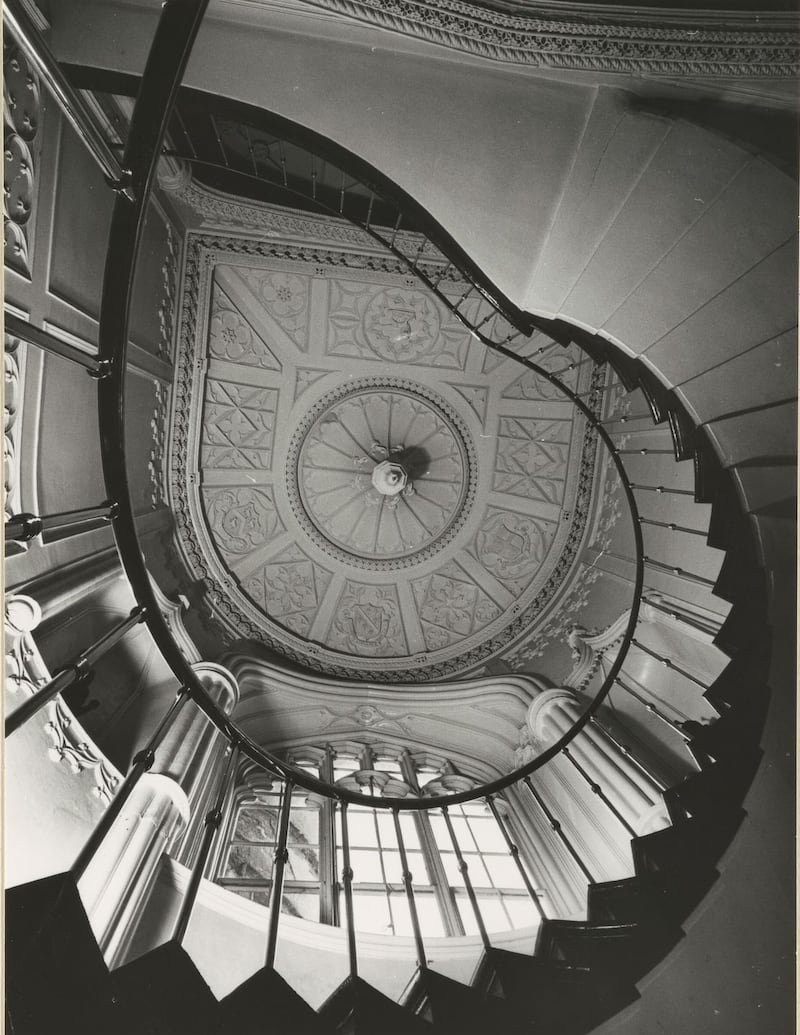
Stairhall, Castle Howard, Co Wicklow
In 1811 Col Robert Howard purchased a house then called Cronebane Lodge, romantically perched above the Meeting of the Waters, a spot made famous thanks to a poem written by Thomas Moore four years before. Its location, combined with the desire to build a residence evoking an ancient past, encouraged Col Howard to commission a design from architect Richard Morrison that would appear part-castle and part-abbey.
The interiors owe much to the English Perpendicular style, not least the splendid staircase. Lit by a large arched Gothic window, the cantilevered Portland stone steps with brass banisters spiral up to the first floor below a plasterwork ceiling replete with coats of arms featuring families associated with the Howards. Although no longer with descendants of the original owners, Castle Howard remains in private hands and in excellent condition.
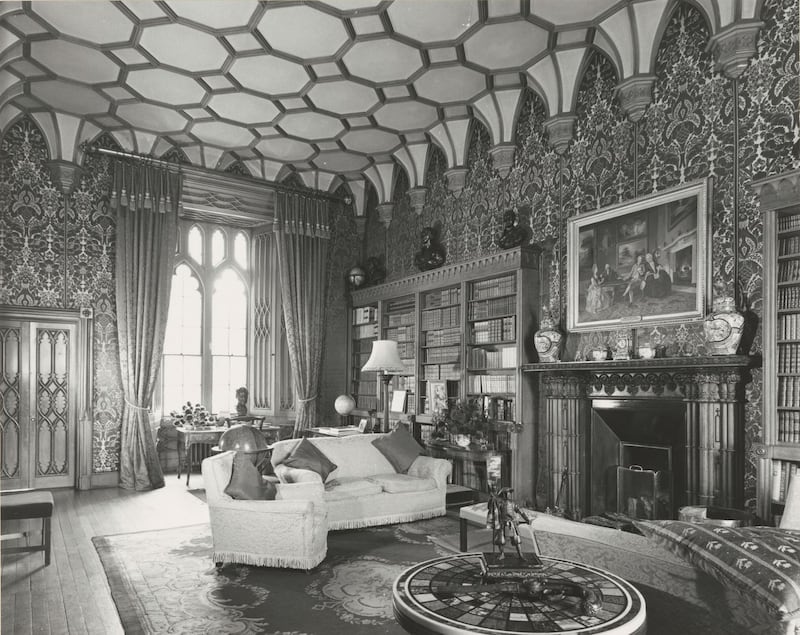
Library, Dunsany Castle, Co Meath
The Plunketts are one of the oldest Anglo-Norman families in Ireland, and one of the very few still living in the same part of the country. Dunsany Castle passed into their possession through marriage in the early 15th century. A castle is thought to have been constructed here by Hugh de Lacy in the 12th century but the present building is likely later, again from around the time of the Plunketts' acquisition. Major alterations took place in the late 18th and early 19th century, and the library dates from the latter period, its design attributed to James Shiel.
The room has changed little since then, its ceiling an elaborate arrangement of diamonds and octagons leading to no fewer than 36 ribbed brackets running around the walls, with Gothic-style grained oak bookcases beneath. Rossmore’s photograph perfectly captures the room’s distinctive, mellow charm.
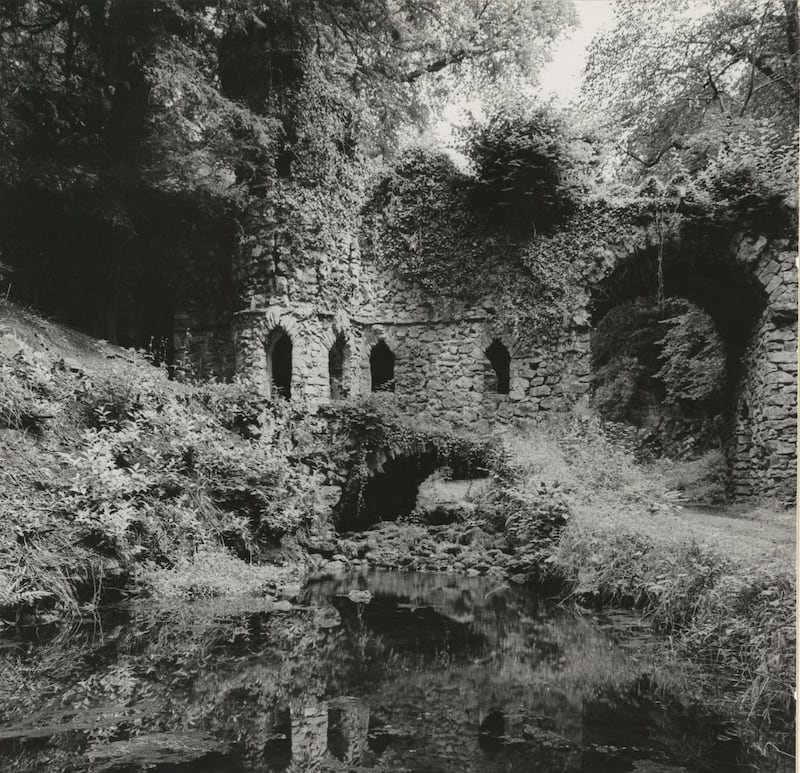
Rustic Arch, Luttrellstown, Co Dublin
Believed to date from c1765, the Rustic Arch is but one feature in the demesne of Luttrellstown, which in its present form dates from the second half of the 18th century. Simon Luttrell, first Earl of Carhampton, and his son Henry transformed what had been a formal garden into a naturalistic landscape replete with woodland, stretches of water and romantic meandering pathways.
Luttrellstown soon became renowned for the beauty of its grounds, the German Prince Pückler-Muskau declaring in the mid-1820s that “scenery, by nature most beautiful, is improved by art to the highest degree of its capacity, and, without destroying its free and wild character, a variety and richness of vegetation is produced which enchants the eye”.
The Rustic Arch was a key element of the demesne. It carries over a ravine and features a hermitage that originally contained three rooms intended for entertaining. The exterior is given the form of a faux-ruin, the walls made of rough-hewn rocks through which are pierced arched Gothic windows; these once contained glass, now long since lost. The Rustic Arch itself risks a similar fate, since it has suffered dangerous neglect in recent years with sections of the stonework collapsed: in 2017 An Taisce added the structure to its list of buildings at risk.
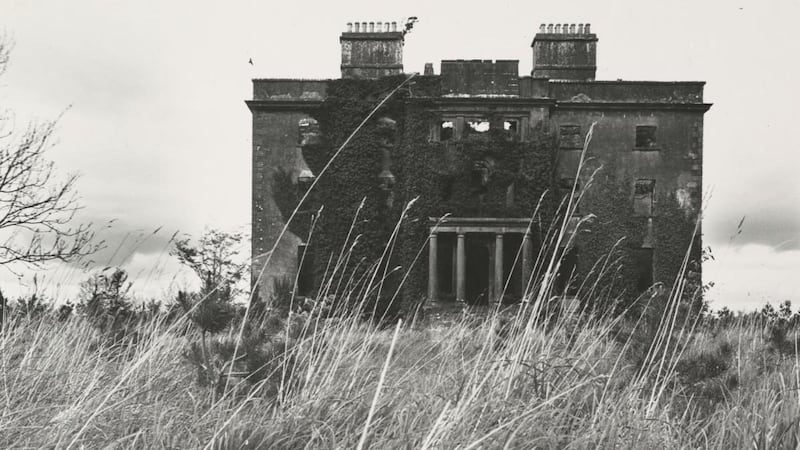
Moore Hall, Co Mayo
Galway merchant George Moore built a house on an estate of some 12,500 acres in Co Mayo, accredited on stylistic grounds to Waterford architect John Roberts: its position was selected to enjoy views across Lough Carra and the prospect of Ballinrobe's spires in the far distance.
Fronted in cut limestone, Moore Hall stands three storeys over sunken basement, the façade centred on a single-bay breakfront with tetrastyle Doric portico below the first-floor Venetian window. A date stone indicates it was completed in 1795, three years before Ireland erupted in rebellion. Among those who took part was George Moore’s eldest son John, who returned to Ireland to join the uprising. Within weeks, however, the British authorities had crushed the rebellion and captured Moore, who died the following year en route to the east coast where he was due to be deported. George Moore, who had spent some £2,500 attempting to secure his heir’s release, had died just a month earlier.
Despite these impeccable republican credentials, and the Moores’ tireless work to ensure the survival of their tenants during the Great Famine of the 1840s, Moore Hall was burnt by incendiaries in the Civil War. It has remained a shell ever since, and even the view of Lough Carra, still visible when Paddy took this photograph, was lost as the house became surrounded by thick woodland.
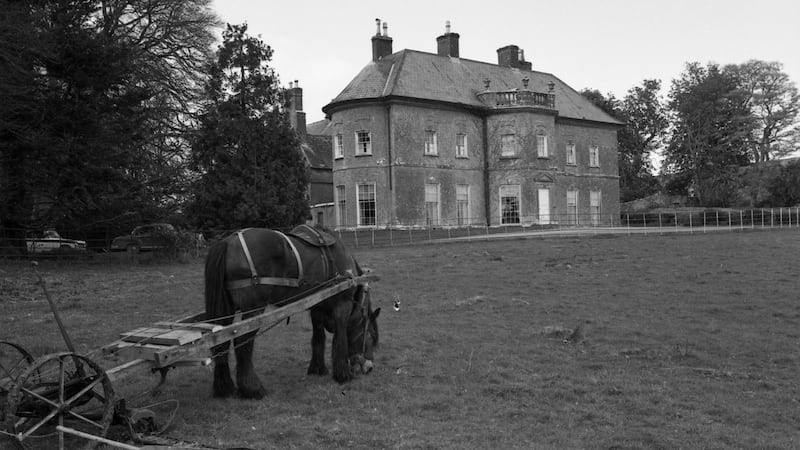
New Hall, Co Clare
The entrance front of New Hall seen here was added to an older property a few years after the marriage in 1762 of local MP Charles MacDonnell to Catherine O'Brien, third daughter of Sir Edward O'Brien of Dromoland.
In the April-September 1967 issue of the Irish Georgian Society’s Bulletin, the Knight of Glin attributed the design of this new section to Co Clare gentleman painter and architect Francis Bindon. This attribution has stood for the past half-century, but little work has been undertaken on Bindon in the interim and it is worth noting that New Hall’s exterior lacks those features judged most typically Bindon-esque. What might almost be considered the architect’s tics, not least the façade having a central curved niche on the first floor and a blind oculus on the second, are not found at New Hall.
Instead the house presents such striking elements as raised brick panels, like arched eyebrows, above the first floor windows, and full length bows at either end of the structure. Perhaps therefore it might better be described as School of Bindon.
Descendants of MacDonnell remained at New Hall until the early 1920s, after which it was bought by a farming family from neighbouring Co Galway: they were in residence when Paddy visited. More recently the property, which was in poor condition, changed hands again, and one must hope the new owner is in a position to ensure New Hall’s survival.
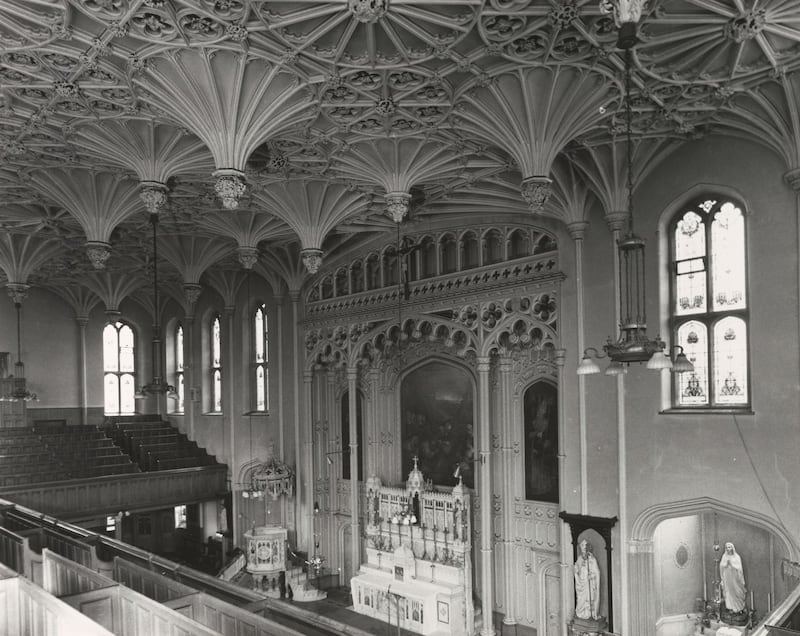
St Malachy's, Belfast
It is ironic that one of the loveliest Roman Catholic churches in Ireland should have been designed by a Quaker. Thomas Jackson was still relatively young (33) when he won the competition to design what was intended to be a new Catholic cathedral in Belfast, its foundation stone laid on the feast of St Malachy in November 1841.
Cruciform in shape, the building measures 113ft by 52ft and is 40ft high. This was supposed to be just the sanctuary of the intended cathedral, designed to hold 7,000 worshippers. However, limited funds, and soon afterwards the onset of the Great Famine, meant work on St Malachy’s was concluded in December 1844. The fan-vaulted ceiling is especially fine. St Malachy’s merits continue to be appreciated, and in 2008-9 the building benefitted from an extensive restoration programme costing some £3.5 million.










